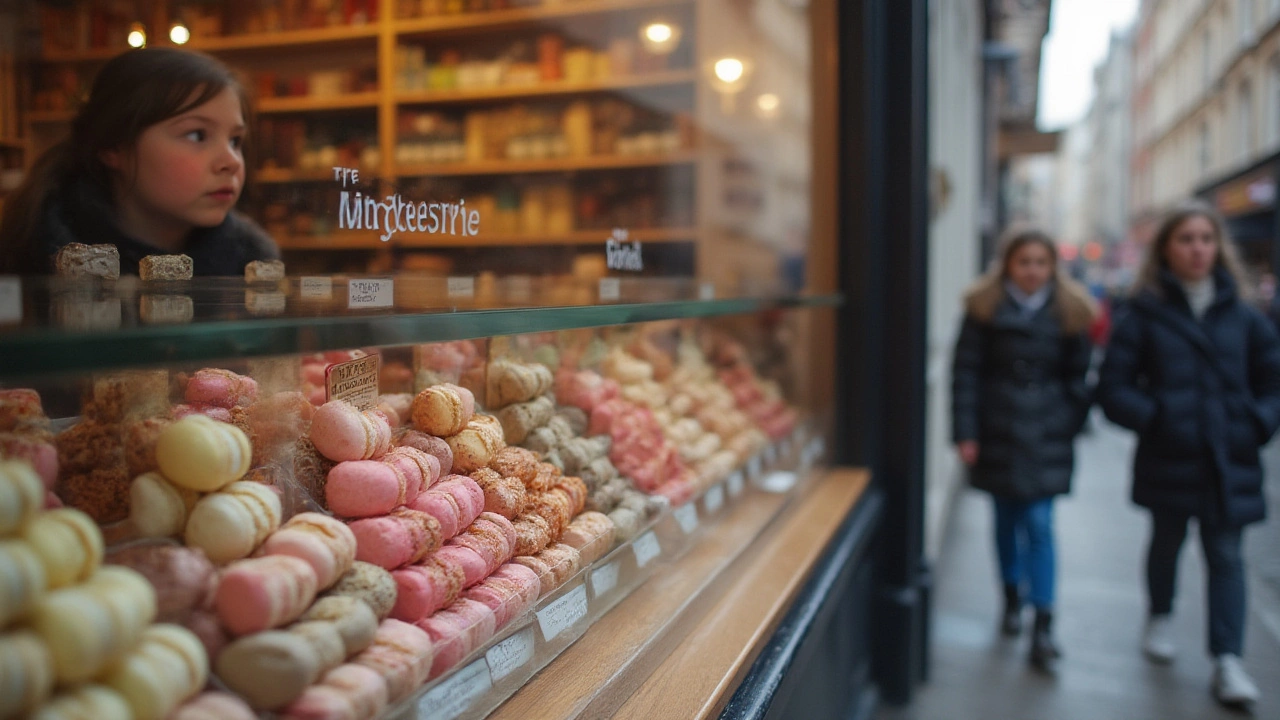
If you’ve ever stood in front of a pastry display, eyes fixed on the rainbow towers of macarons, you know the feeling: that mix of wonder, temptation, and just a tiny bit of sticker shock. Why do these little French cookies, barely the size of a coin, cost as much as a small cake? The truth is, a box of macarons isn’t just a treat—it’s an experience, a splurge, and sometimes, a tiny luxury that says, “You deserve it.” But before you reach for your wallet, let’s unpack exactly what goes into their price, what to look out for as a smart buyer, and why there’s more to that pretty box than meets the eye.
What Determines the Price of a Box of Macarons?
First up: macarons aren’t your average cookie. Each one takes patience, skill, and a surprising amount of pricey ingredients. The main players? Almond flour, powdered sugar, and egg whites—yep, that’s it for the shells. Almond flour is way pricier than regular flour, sometimes even quadruple the cost. Add to that the specialty fillings—classic buttercreams, ganaches, or fruity jams—most made with real nuts, chocolates, or fruit purees. Suddenly, the cost starts making sense.
There’s also the question of labor. Macarons are notoriously fussy. Even experienced bakers mess up a batch now and then. They need precise mixing (“macaronage”—no joke, that’s a word), perfect piping skills, and just the right amount of time to rest before baking. One slip, and you’ve got a tray of cracked, hollow, or sticky cookies that just won’t do. That level of skill and attention is baked into the price—literally.
Then, there’s presentation and packaging. You’re not just paying for the cookies themselves but for their Parisian-chic look: elegant boxes, inserts, and sometimes even hand-tied ribbons. These little luxuries make a box of macarons a go-to gift—weddings, birthdays, or that one friend who just really loves sweets.
Location also plays a big role. Purchasing a box from a high-end shop in Paris (think Ladurée or Pierre Hermé) comes with a premium, just like buying from a boutique bakery in New York, London, or São Paulo. Rent, staff, and local ingredient costs all affect that final price tag. Even within the same country—or city—prices can vary. At the farmer’s market, you might see a small box for $10, while in a luxury department store, the same box could be $35 or more.
Macaron price depends on the size and style, too. Mini macarons (about 2.5cm wide) are a little cheaper, while specialty versions—painted, dusted with gold, or packed with unique flavors—command top dollar. Gluten-free, vegan, or seasonal collections might cost more because of specialty ingredients or extra care in production.
Breaking Down Macaron Prices: Country by Country
Prices for macarons are all over the map—literally. Here’s what you’re likely to pay in different countries, as of this year:
| Country | Average Price (Box of 6) | Notes |
|---|---|---|
| USA | $12 - $24 | Higher-end shops in big cities may charge up to $30 or more. |
| France | €9 - €24 | Famous Parisian shops often charge €15+ even for small boxes. |
| UK | £8 - £18 | Wide range, with London prices at the top. |
| Brazil | R$35 - R$70 | Imported ingredients make them more expensive in big cities. |
| Australia | AUD 16 - AUD 36 | Often sold in specialty food markets and patisseries. |
| Japan | ¥1200 - ¥2800 | Packaging and flavors can be quite unique, with a premium attached. |
Don’t forget: seasonal flavors, custom designs, or luxury packaging can push those prices even higher. Some patisseries offer tasting boxes with rare or limited-edition flavors at a premium. If you’re looking to save money, basic flavors (think chocolate, vanilla, raspberry) often cost less than creative or alcohol-infused ones.
There’s also the world of supermarket macarons. Chains like Trader Joe’s or Marks & Spencer sometimes stock frozen boxes, usually cheaper per piece but with a different texture—less delicate, a bit chewier. The trade-off is price versus freshness. Expect to pay about half as much per macaron compared to fresh, bakery-made ones.
For events, big orders can come with bulk pricing. Some bakeries might offer a small discount for 50 or 100-piece party platters, especially if you’re skipping fancy packaging.
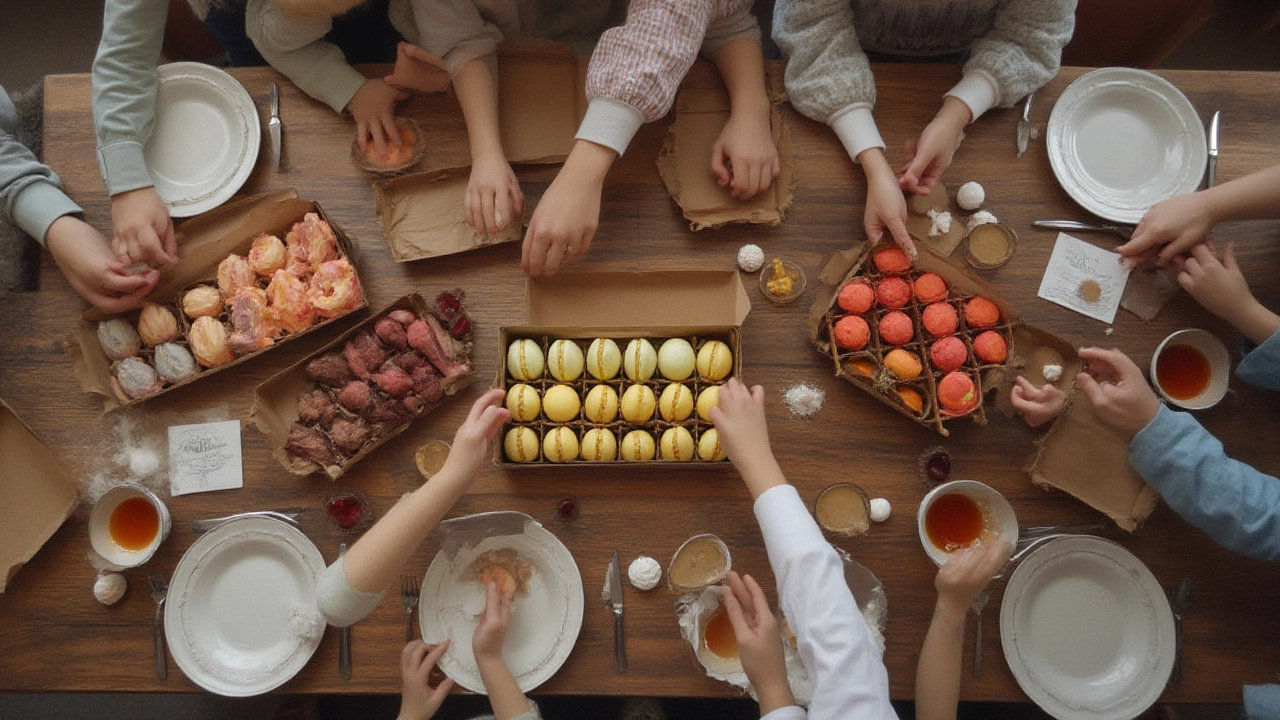
Are Expensive Macarons Really Worth It?
Is shelling out $2–$5 per cookie justifiable? That depends! Not all macarons are created equal. At a high-end Parisian shop, you’re getting not just flavor but a symbol of French elegance—the art of pastry in a few bites. Texture makes a huge difference. A perfectly made macaron should have a feather-light shell, a soft, chewy inside, and a creamy, flavorful filling that complements—not overpowers—the shell. When done right, the experience is almost magical.
Cheaper, mass-produced macarons sometimes cut corners: cheaper almond flour, artificial flavors, or preservatives to increase shelf life. Ever bitten into one and thought, “This tastes more like sugar than anything else”? That’s why. Handmade, small-batch or artisan macarons often use real nuts, whole fruits, imported vanilla, and European butter. You’re paying for craftsmanship, too—the time to perfect each batch, to ensure none come out lopsided or sticky.
Let’s talk freshness. Macarons age quickly. The best ones are either sold the same day or shipped overnight with chilled packaging. Supermarket or frozen options can’t compete on texture and flavor, even though they may look the same. That “snap” when you bite in, followed by a light chew, just doesn’t happen with old or factory-made batches.
So, are pricey macarons worth it? If you’re hunting for a special gift, marking a big moment, or simply want to treat yourself right, yes, they’re worth the splurge. For casual snacking, everyday brands can hit the spot, but don’t expect the fireworks of an artisan bakery macaron. It’s the difference between a fast-food burger and a gourmet steak—both are food, but only one feels like an experience.
Smart Tips for Buying the Best Macarons (and Saving Money)
Don’t want to blow your budget but still crave that little French fix? Here’s how to get the best macarons for your money:
- Shop local: Start with nearby bakeries. Even a coffee shop may stock locally made macarons, often fresher (and sometimes cheaper) than fancy boutiques.
- Try farmers’ markets: Smaller producers may sell at lower prices, plus you can usually chat with the bakers about ingredients and flavors.
- Buy in bulk: Got a party or big family? Larger platters or boxes are often discounted per piece, especially if you pass up fancy packaging.
- Mix and match flavors: If the shop charges a flat rate per box, toss in a few unusual flavors you wouldn’t try otherwise—think black sesame or passionfruit.
- Order ahead: Some bakeries give a small discount if you pre-order, which also guarantees you get the freshest batch that day.
- Look for post-holiday sales: Macarons leftover from holidays (think Valentine’s Day or Easter) may be offered at a discount.
- Compare packaging: The pretty box can add quite a bit to the price. Some patisseries will give you the option to skip the fancy stuff and pay less.
- Try DIY: Feeling adventurous? Homemade macarons are cheaper if you can nail the process (pro tip: expect some failed batches early on!).
And don’t be afraid to ask questions when buying in person. What ingredients do they use? How fresh are today’s flavors? Shops that take real pride in their macarons will love to share those details. And if you’re ordering for an event, ask about tastings—many bakeries offer sample packs at a lower price, so you can try before you commit to a big order.
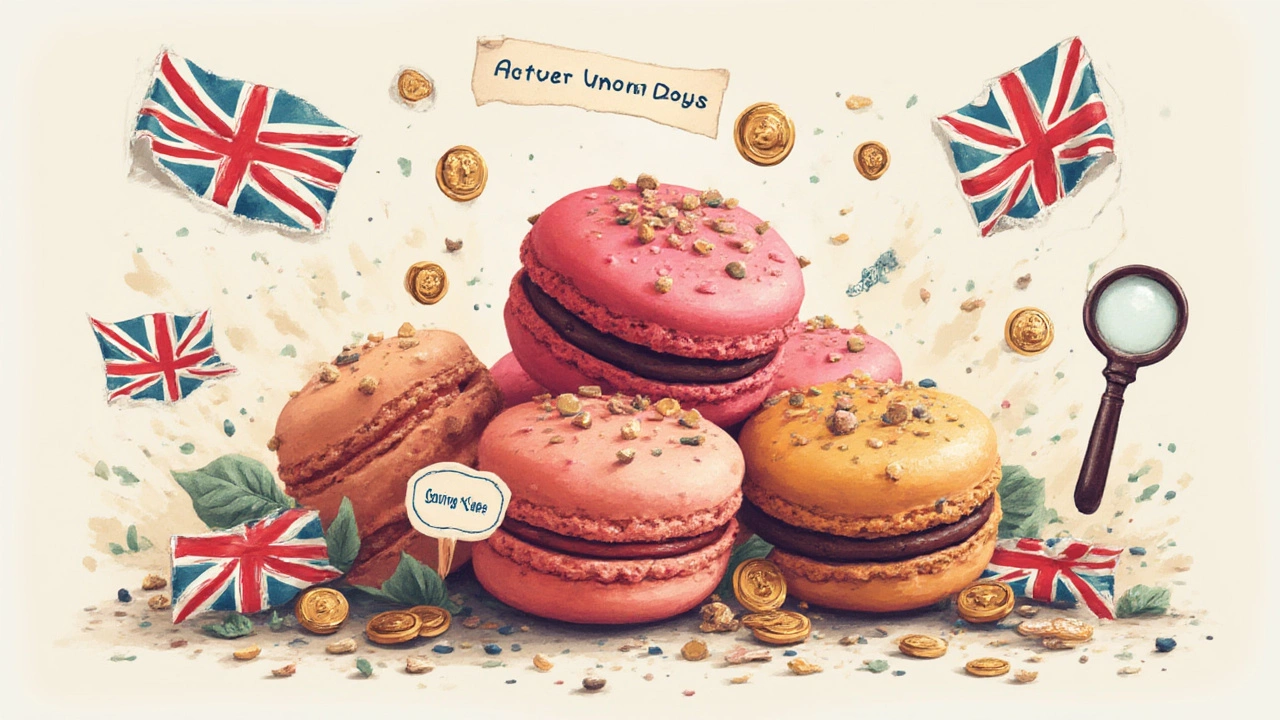
Fun Facts and Hidden Details About Macaron Pricing
Let’s geek out for a second. Did you know the macaron shell itself contains no butter or oil? All that richness comes from a simple batter—egg whites whipped into a meringue, gently folded with almond flour and sugar, then piped onto sheets to form the iconic “foot” during baking. The filling—usually ganache, buttercream, or jam—brings the flavor. This means gluten-free folks can indulge, though traditional recipes aren’t vegan unless made special order.
Macarons have been around since at least the 16th century but only became the ultimate luxury treat in Paris in the 20th century. Today, top-tier Parisian shops (like the famous Ladurée) sell over 15,000 macarons every single day! During holidays, that number can double. They even offer limited-edition flavors each season—chestnut in winter, rose in spring—that demand a higher price.
Curious about the world record for the priciest macarons? In 2013, pastry chef Pierre Hermé made a single, diamond-studded macaron for charity—valued at $7,400. Okay, most are far less extravagant, but some shops regularly launch designer collaborations or release flavors infused with rare ingredients like yuzu, pistachio imported from Sicily, or truffles, all affecting the price.
Another cost factor: shelf life. Macarons stay perfect for up to three days at room temperature, a week if refrigerated, and about a month frozen. That delicate shell and filling make them high-maintenance—and explains why day-old macarons might get a markdown in shops. If you see “macaron day” sales, snap them up and eat soon!
Finally, for those eyeing the cheapest way in, DIY is possible but tricky. Ingredients set you back (almond flour alone can cost $10 for a 1lb bag), and failed batches are common for newbies. But for those willing to practice, it’s a fun and pretty delicious hobby—plus, you get bragging rights.


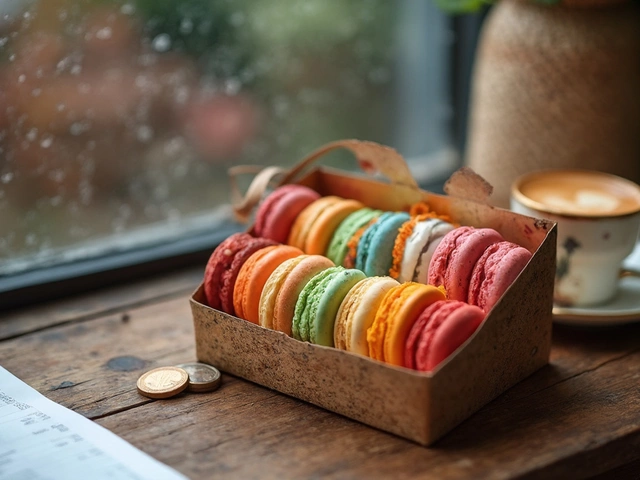
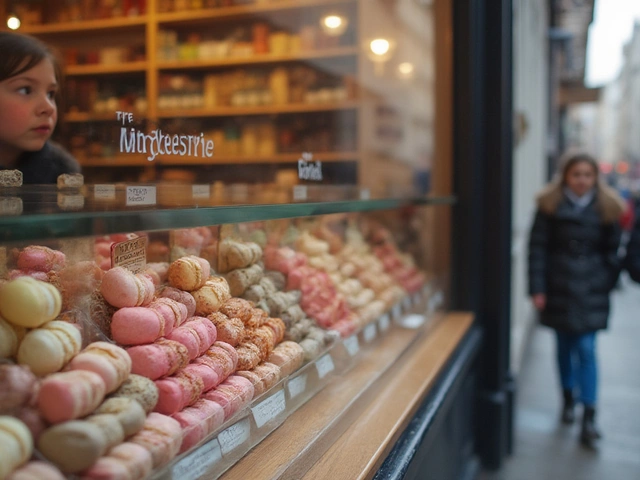
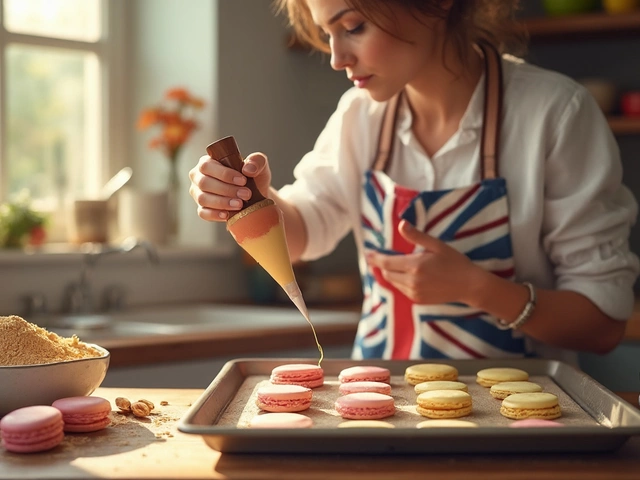
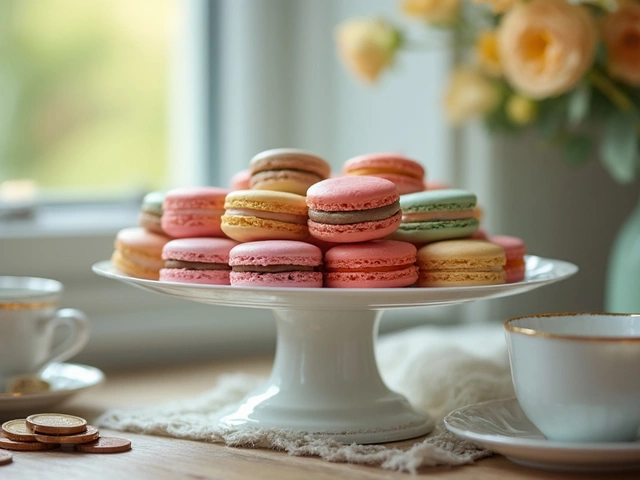
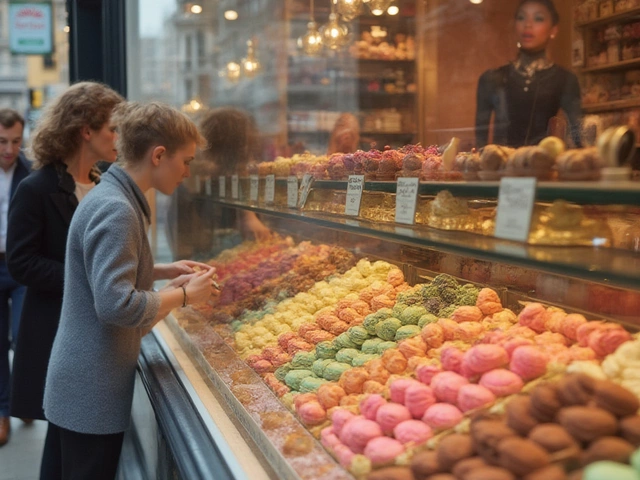

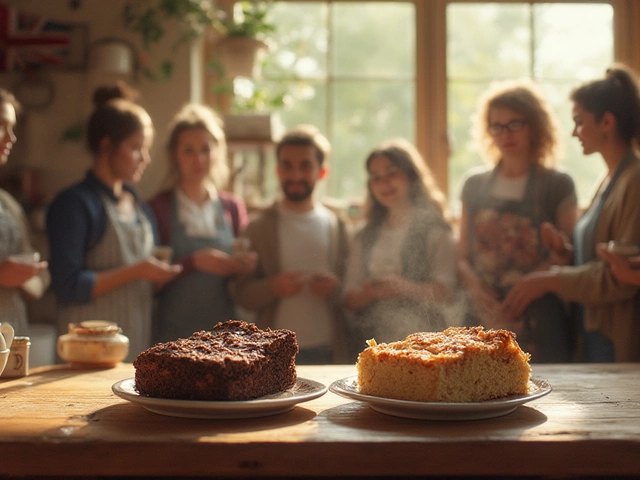
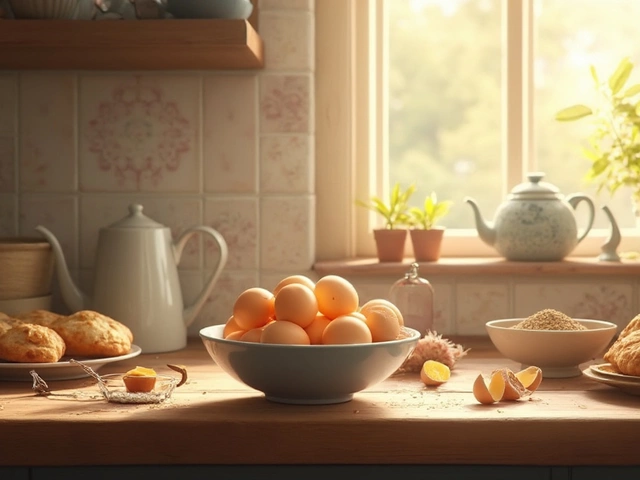
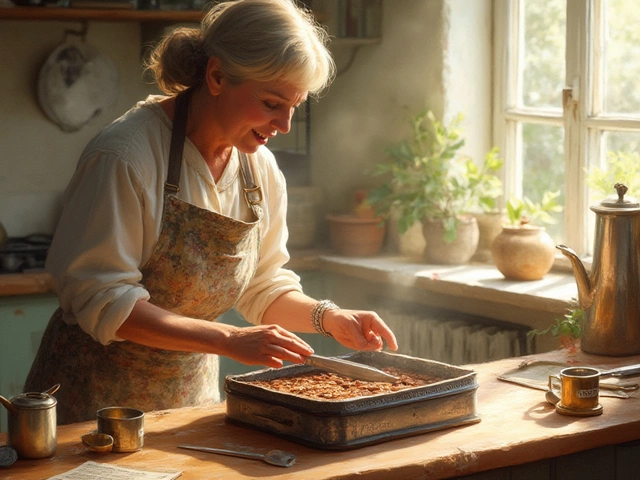
Write a comment